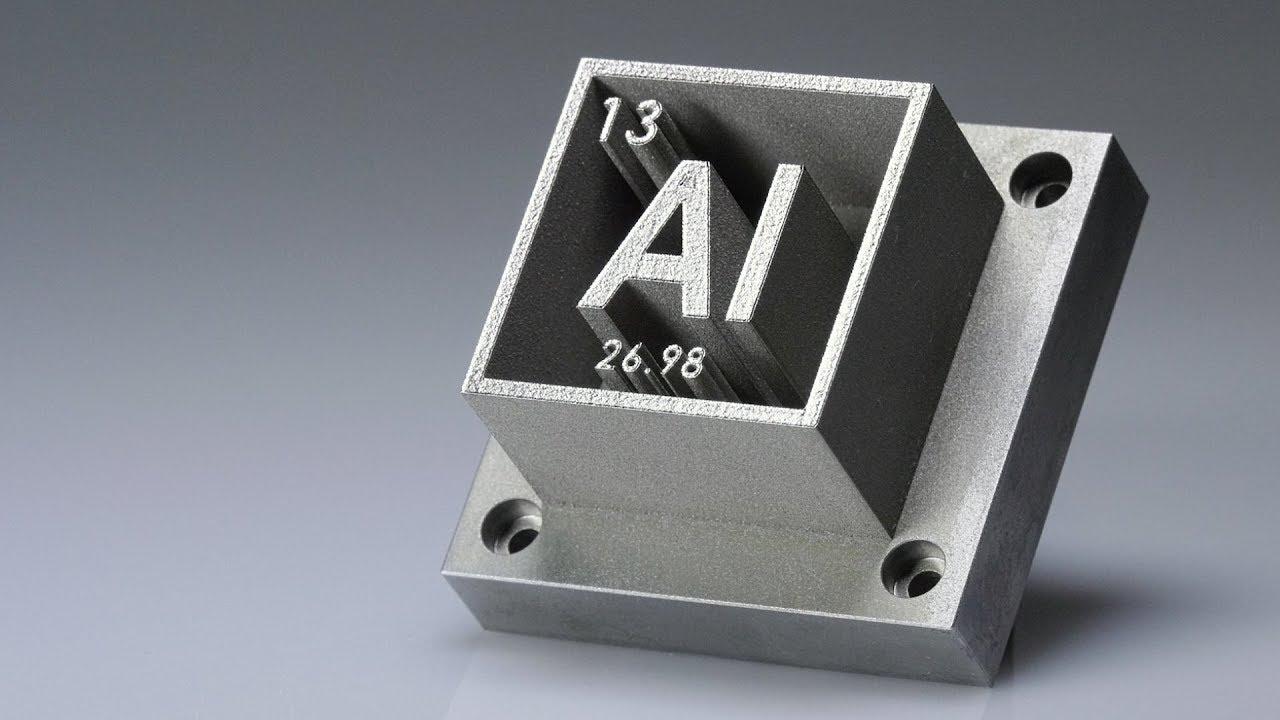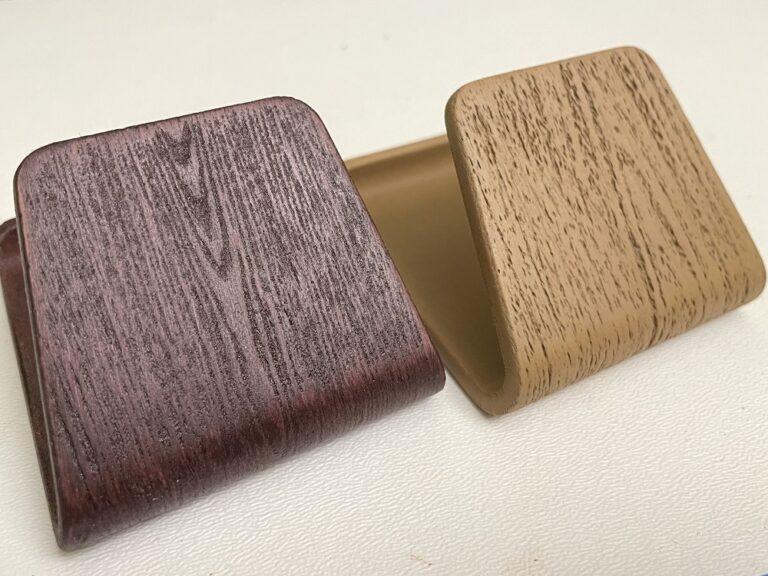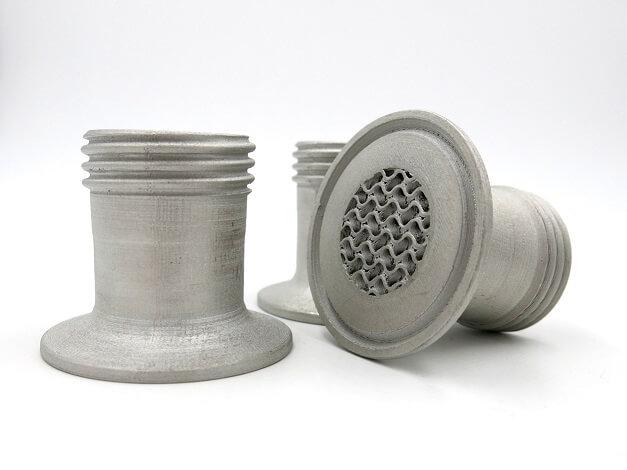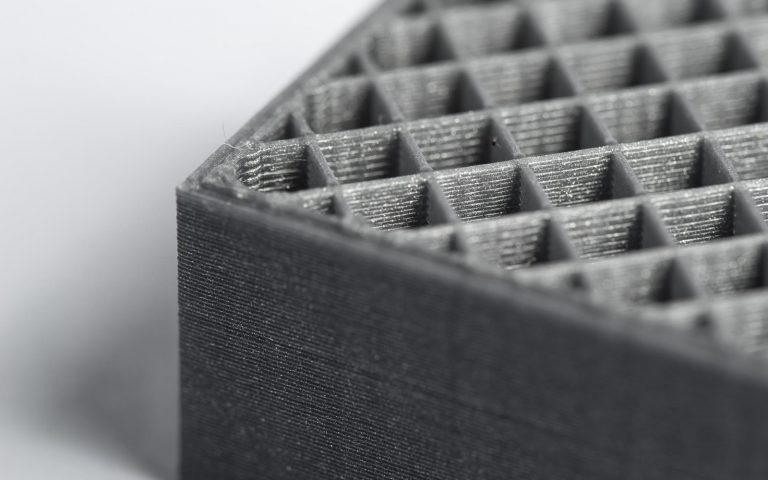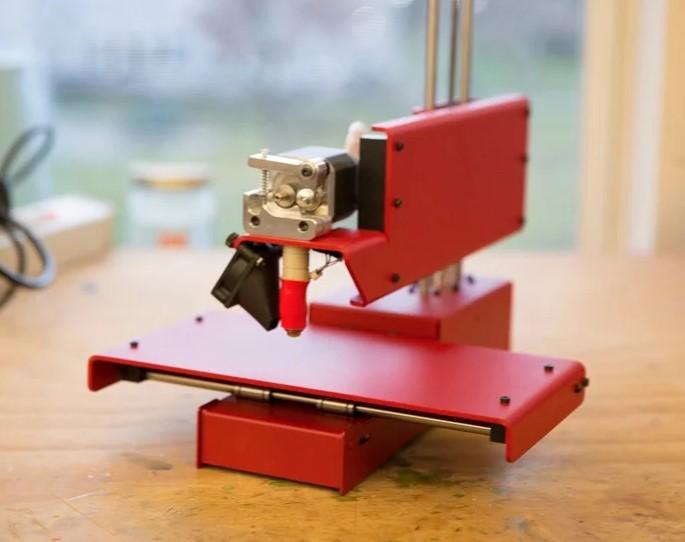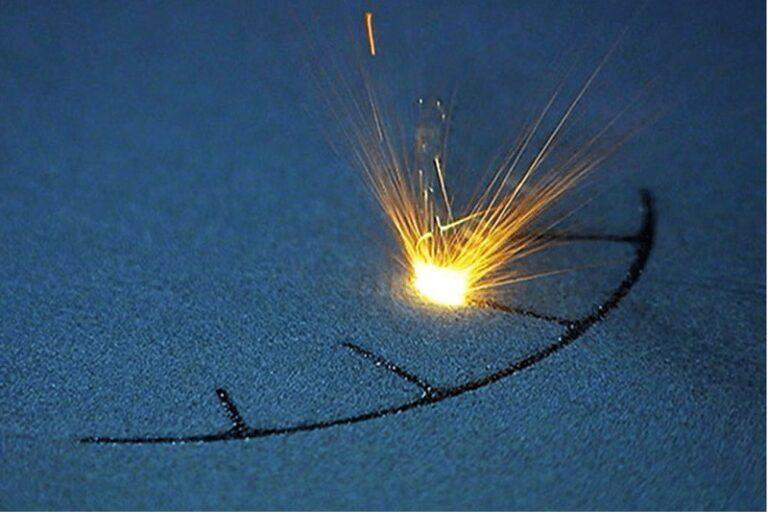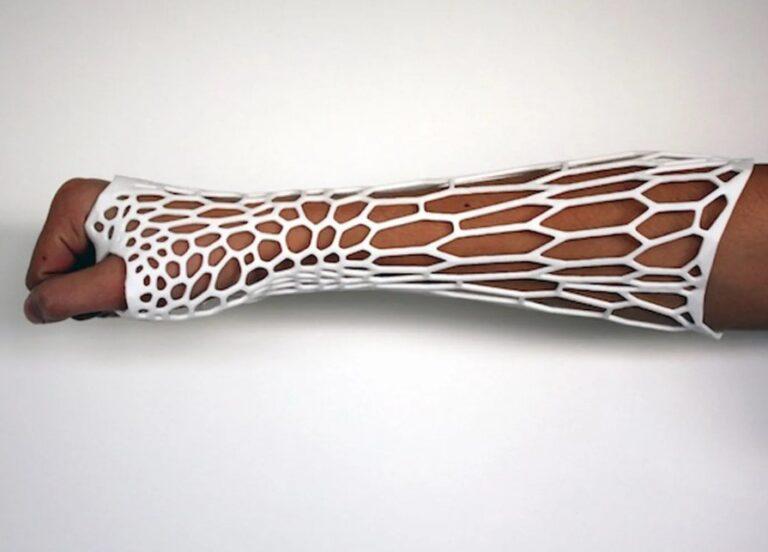Introduction
With their distinctive capabilities, aluminum 3D printers have completely changed the manufacturing sector. These machines also provide unmatched precision and attention to detail, enabling the manufacturing of intricate and complex components. As a result, this technology has substantially benefited sectors like aircraft, automobiles, and medicine. Aluminum also offers good mechanical qualities and corrosion resistance when used as a printing material. Last but not least, despite being a relatively new technology, aluminum 3D printers continue to advance, opening the way for a manufacturing future that is more effective and economical.
Brief overview of 3D printing technology
When 3D printing first became a viable option for building intricate buildings and patterns, it was revolutionary. Due to this, the method has developed and now works with a variety of materials, including ceramics, metals, and polymers. Because they can create strong, lightweight pieces, aluminum 3D printers have become one of the most popular. Additionally, the aerospace, automotive, and medical industries have all benefited from the upgraded technology. As a result of its adaptability and effectiveness, 3D printing continues to revolutionize the manufacturing industry. It is unmatched by more traditional techniques.
Explanation of aluminum 3D printing
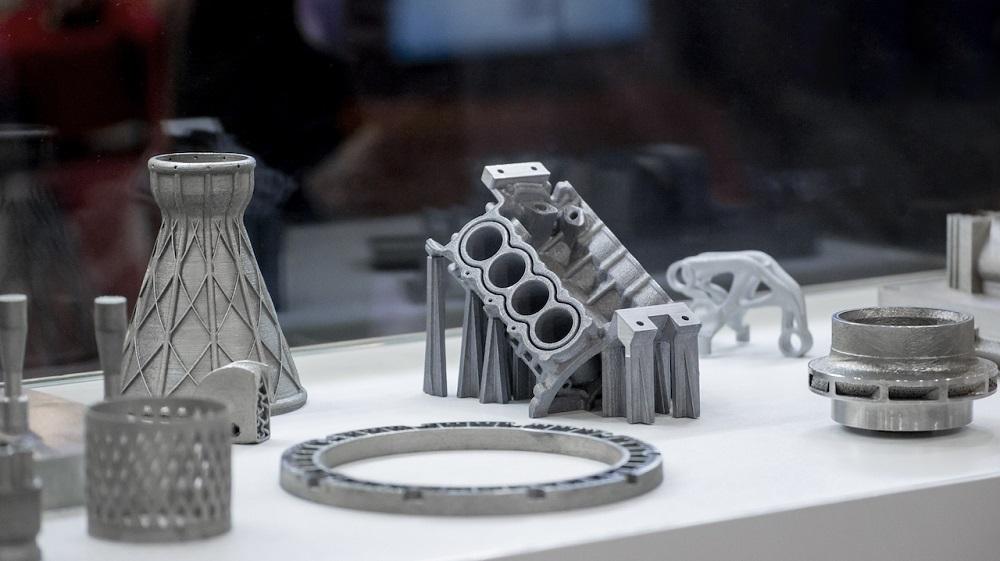
Benefits of Aluminum 3D Printing
Aluminum 3D printing offers numerous advantages, beginning with its ability to create lightweight yet strong components. Moreover, the technology enables the production of intricate geometries that would be otherwise difficult or impossible to achieve through conventional manufacturing methods. As a result, designers gain increased freedom to explore innovative solutions. Additionally, aluminum 3D printers significantly reduce material waste by using only the necessary amount for each project. Consequently, not only are costs lowered, but the environmental impact is lessened as well. In summary, aluminum 3D printing paves the way for more efficient, sustainable, and creative manufacturing processes.
Advantages of using aluminum for 3D printing
Aluminum boasts several properties that make it a highly sought-after material for 3D printing applications. First and foremost, aluminum is renowned for its exceptional strength-to-weight ratio. Consequently, parts produced with an aluminum 3D printer exhibit high strength while maintaining a relatively low mass. This characteristic is especially valuable in industries such as aerospace and automotive, where weight reduction is critical for improving performance and fuel efficiency.
Furthermore, aluminum demonstrates excellent thermal and electrical conductivity. As a result, components printed with aluminum 3D printers are suitable for applications that require heat dissipation or electrical conductivity. Additionally, aluminum’s natural resistance to corrosion enhances the durability and longevity of 3D-printed parts, making them ideal for outdoor or challenging environments.
Another advantage of using aluminum in 3D printing is its compatibility with various printing technologies, such as SLM, EBM, DMLS, and binder jetting. This flexibility enables manufacturers to choose the most appropriate method for their specific needs and requirements, resulting in optimized production processes. Moreover, aluminum’s recyclability is an essential factor in reducing environmental impact, as it promotes sustainability and responsible material usage.
In summary, aluminum 3D printing offers a multitude of advantages, from lightweight and strong parts to excellent thermal and electrical properties. Coupled with its adaptability to different printing techniques and its eco-friendly nature, aluminum has secured its position as a top choice for numerous industries and applications.
several methods of 3D printing aluminum
There are several methods of 3D printing aluminum, each with its unique advantages and applications:
- Selective Laser Melting (SLM): In this process, a high-power laser selectively fuses aluminum powder layers, resulting in a solid, fully dense part. The aerospace and automotive industries widely use SLM for producing complex and high-strength components.
- Electron Beam Melting (EBM): Similar to SLM, EBM uses an electron beam instead of a laser to melt and fuse aluminum powder layers. EBM suits manufacturing large and complex parts while reducing residual stress.
- Direct Metal Laser Sintering (DMLS): This method also utilizes a laser, but rather than fully melting the powder, DMLS sinters the aluminum particles together. Although DMLS parts may be less dense than SLM or EBM components, this technique is suitable for creating intricate designs and prototypes.
- Binder Jetting: Binder jetting involves depositing a liquid binding agent onto aluminum powder, layer by layer. After printing, the furnace sinters the part to remove the binder and densify the component. This method is ideal for producing large and geometrically complex parts at a lower cost.
Each aluminum 3D printing method offers distinct benefits, catering to different industry needs and project requirements.
compares the different methods of aluminum 3D printing
| Method | Pros | Cons | Applications |
|---|---|---|---|
| Selective Laser Melting (SLM) | High strength and fully dense parts | Slower process, higher cost | Aerospace, automotive, complex parts |
| Electron Beam Melting (EBM) | Reduced residual stress, large parts | High energy consumption, limited materials | Large and complex parts, aerospace |
| Direct Metal Laser Sintering (DMLS) | Intricate designs, faster process | Less dense parts, lower strength | Prototyping, less critical parts |
| Binder Jetting | Lower cost, large and complex parts | Post-processing required, lower resolution | Large components, cost-sensitive projects |
This table compares the different methods of aluminum 3D printing, highlighting their pros, cons, and specific applications. Each technique has its unique advantages and limitations, making them suitable for various industry needs and project requirements.
Comparison with other 3D printing materials
| Material | Strength and Weight | Corrosion Resistance | Thermal Conductivity | Cost | Applications |
|---|---|---|---|---|---|
| Aluminum | High strength-to-weight ratio | Good | High | Moderate | Aerospace, automotive, electronics |
| Titanium | Excellent strength-to-weight ratio | Excellent | Low | High | Aerospace, medical, automotive |
| Stainless Steel | High strength, heavier than aluminum | Good | Moderate | Moderate | Medical, automotive, industrial |
| Inconel (Nickel alloy) | Excellent strength at high temperatures | Good | Low | High | Aerospace, automotive, energy |
| Cobalt Chrome | High strength, wear resistance | Good | Low | High | Medical, dental, aerospace |
This table compares aluminum with other popular metals used in 3D printing, highlighting their strength, weight, corrosion resistance, thermal conductivity, cost, and typical applications. Each material has its unique advantages and limitations, making them suitable for various industry needs and project requirements.
Applications of Aluminum 3D Printing
Aluminum 3D printing has found widespread applications across diverse industries, thanks to its numerous benefits. For instance, aerospace companies utilize aluminum 3D printers to manufacture lightweight, high-strength components, significantly enhancing fuel efficiency and overall performance. Similarly, the automotive sector has embraced this technology to create intricate, optimized parts for both electric and conventional vehicles. Furthermore, electronics manufacturers capitalize on aluminum’s excellent thermal conductivity to develop effective heat sinks and cooling solutions. In the medical field, aluminum 3D printing contributes to the creation of customized prosthetics and surgical instruments. Overall, the versatility of aluminum 3D printers has revolutionized various industries by enabling the production of innovative, tailor-made solutions.
Industrial applications
There are many industrial uses for aluminum 3D printers, from consumer goods to aerospace. The aerospace industry widely uses aluminum 3D printing since lightweight and durable parts can only improve fuel efficiency. The potential of the technology to develop precise, optimized components that enhance performance and save weight also aids the automotive sector. Robotics 3D printers for aluminum make it easier to create strong, lightweight robotic arms and components. Additionally, the ability of the technology to produce unique molds and tools has completely altered the manufacturing environment. In conclusion, aluminum 3D printers have revolutionized a variety of industrial sectors by making it possible to produce cutting-edge, highly effective components.
Personal use applications
Although industrial settings predominantly utilize aluminum 3D printers, emerging personal use applications are also using them. For instance, hobbyists and makers can take advantage of aluminum 3D printers to create custom, lightweight components for drones or RC vehicles. Furthermore, these printers enable the production of bespoke, high-quality gadgets, such as phone stands, laptop cooling pads, or even artistic sculptures. In addition, aluminum’s strength and durability make it a suitable choice for producing custom bicycle parts or outdoor equipment. As the technology becomes more accessible and affordable, we can expect a surge in innovative personal projects and creations enabled by aluminum 3D printers.
aluminum 3d printing in various industries
Various industries can use Aluminum 3D printing because numerous applications find its lightweight and strong properties an attractive choice. Some industries that can benefit from aluminum 3D printing include:
Aerospace industry
The aerospace industry, where lightweight, high-strength components are essential, benefits greatly from aluminum 3D printers. Leading aircraft producer Airbus, for instance, has successfully incorporated aluminum 3D-printed components into its A350 XWB aircraft. To build a complicated and optimized bracket with a large weight reduction and enhanced fuel efficiency, the business specifically used aluminum-lithium alloy. Additionally, satellite producers use metal 3D printing to produce corrosion-resistant, lightweight antenna mounts and waveguides. Fundamentally, aluminum 3D printers are revolutionizing the aerospace sector by making it possible to produce cutting-edge, lightweight, and high-performance components.
Automotive industry
Aluminum 3D printers have made significant inroads in the automotive industry, enabling the production of lightweight, high-performance components. For instance, BMW, a renowned car manufacturer, has incorporated aluminum 3D-printed parts into their i8 Roadster model. Specifically, they used aluminum 3D printing to create a convertible top bracket, reducing weight by 44% compared to traditional manufacturing methods. Moreover, electric vehicle manufacturers, such as Tesla, employ aluminum 3D printing to optimize heat sinks and cooling solutions for better battery performance. In summary, aluminum 3D printers are driving innovation in the automotive sector by facilitating the creation of lightweight, efficient, and tailored components.
Electronics industry
Aluminum 3D printers are becoming increasingly popular in the electronics industry, thanks to their ability to create customized, thermally efficient components. For example, Apple has employed aluminum 3D printing to develop intricate heat sinks for their Mac Pro computers. By optimizing the design and leveraging aluminum’s excellent thermal conductivity, the company achieved enhanced cooling performance while maintaining a compact form factor. Furthermore, electronics manufacturers have utilized aluminum 3D printers to produce custom enclosures and casings for devices, offering improved durability and heat dissipation. In essence, aluminum 3D printing is revolutionizing the electronics industry by enabling the creation of innovative and efficient components.
Medical field
Aluminum 3D printers are making significant strides in the medical field, enabling the production of customized and lightweight devices. For instance, a team at the University of Michigan utilized aluminum 3D printing to create a one-of-a-kind cranial implant for a patient with a skull defect. The tailored aluminum implant offered a lightweight, durable, and precise solution, perfectly conforming to the patient’s unique anatomy. Additionally, aluminum 3D printers have been employed to develop specialized surgical instruments and tools, contributing to more efficient and effective procedures. In summary, aluminum 3D printing is transforming the medical industry by facilitating the creation of tailor-made, high-performance devices and instruments.
Robotic
In the realm of robotics, where lightweight and durable components are crucial, aluminum 3D printers are increasingly being used. For instance, the BionicCobot, a pneumatic robotic arm, was created by Festo, a top industrial automation business, using aluminum 3D printing. The company developed a very effective and adaptable robotic solution by utilizing the technology’s capacity to produce complex, lightweight parts. Additionally, bespoke parts for autonomous drones have been produced using aluminum 3D printers, resulting in greater flight efficiency and increased cargo capacity. To put it simply, aluminum 3D printing is transforming the robotics sector by making it easier to produce cutting-edge, lightweight, and high-performance parts.
Consumer goods industry
In the consumer goods industry, aluminum 3D printers are creating a name for themselves by making it possible to produce custom, high-quality products. For instance, a well-known producer of photographic gear called Peak Design used aluminum 3D printing to produce a light, tough tripod with a distinctive, compact design. For both seasoned photographers and amateurs, this novel tripod improves performance and portability. Additionally, unique phone supports, laptop cooling pads, and even expensive, personalized jewelry have all been made using metal 3D printers. In conclusion, aluminum 3D printing is revolutionizing the consumer goods sector by making it possible to produce unique, custom, and high-performance products.
Industrial equipment
Aluminum 3D printers have found a niche in the industrial equipment sector, where customized, durable components are highly valued. For example, GE Aviation has successfully harnessed aluminum 3D printing to create a unique fuel nozzle for their LEAP aircraft engines. The intricate, lightweight design results in improved fuel efficiency and reduced emissions, showcasing the technology’s potential for optimizing industrial components. Furthermore, aluminum 3D printers have been employed to manufacture custom molds and tooling for injection molding and die-casting processes, significantly reducing lead times and production costs. In essence, aluminum 3D printing is revolutionizing the industrial equipment sector by enabling the creation of innovative, efficient, and tailored components.
Energy sector
Aluminum 3D printers are increasingly being adopted in the energy sector to create efficient, lightweight components for renewable energy systems. For example, Siemens, a global technology powerhouse, has utilized aluminum 3D printing to develop a highly efficient gas turbine component. The optimized, lightweight design contributed to enhanced performance and a reduction in greenhouse gas emissions. Moreover, aluminum 3D printers have been employed in the production of custom brackets and mounts for solar panels, offering corrosion resistance and improved structural integrity. In summary, aluminum 3D printing is transforming the energy sector by enabling the creation of innovative and efficient solutions that contribute to a more sustainable future.
How to Choose the Right Aluminum 3D Printer
Selecting the right aluminum 3D printer requires careful consideration of various factors to ensure a suitable match for your needs. Firstly, assess the printer’s compatibility with specific aluminum alloys, as certain models may only support a limited range. Additionally, evaluate the printer’s build volume and resolution capabilities, ensuring they align with your project requirements. Moreover, consider the printer’s ease of use, including its software compatibility and user interface, which can significantly impact the overall user experience. Furthermore, investigating the available customer support and maintenance services, as a responsive and knowledgeable team can be invaluable. Lastly, weigh the initial investment and ongoing operating costs to ensure the aluminum 3D printer aligns with your budget constraints. By carefully examining these factors, you can confidently select the ideal aluminum 3D printer for your specific needs.
Factors to consider when choosing an aluminum 3D printer
Compatibility with aluminum alloys
When selecting an aluminum 3D printer, it’s crucial to consider its compatibility with various aluminum alloys. Different models may be designed to work with specific alloys, each offering unique properties such as strength, corrosion resistance, and thermal conductivity. By ensuring the aluminum 3D printer can handle the desired alloy, you can optimize the final product’s performance and meet specific application requirements.
Build volume and resolution capabilities
Another vital factor to consider is the printer’s build volume and resolution capabilities. Build volume determines the maximum size of the object that can be printed, while resolution refers to the level of detail achievable. By choosing an aluminum 3D printer with the appropriate build volume and resolution for your projects, you can ensure optimal results and avoid limitations in your design process.
Ease of use and software compatibility
The user-friendliness of an aluminum 3D printer should not be overlooked. Examine the printer’s software compatibility, ensuring it works seamlessly with your preferred design programs. Additionally, consider the user interface and ease of operation, as a user-friendly system can significantly impact the overall user experience, reducing the learning curve and streamlining the 3D printing process.
Customer support and maintenance services
Investigating the available customer support and maintenance services offered by the manufacturer is an essential aspect of choosing an aluminum 3D printer. A responsive and knowledgeable support team can provide invaluable assistance in troubleshooting issues, maintaining the printer, and optimizing its performance. By selecting a printer with robust customer support, you can ensure a smoother and more efficient experience.
Initial investment and operating costs
Lastly, it’s crucial to weigh the initial investment and ongoing operating costs when choosing an aluminum 3D printer. While some models may appear more affordable upfront, they could have higher operating costs in terms of materials, maintenance, and energy consumption. By carefully evaluating these factors, you can make a well-informed decision that aligns with your budget constraints and long-term objectives.
Popular aluminum 3D printer models and their features
EOS M 290 (Best Choice)
The EOS M 290, a DMLS (Direct Metal Laser Sintering) aluminum 3D printer, boasts a 250 x 250 x 325 mm build volume and 100-micron layer resolution. Equipped with a powerful 400W laser, it delivers high-quality, accurate builds. With a closed material system, it supports numerous materials, including MaragingSteel MS1, EOS CobaltChrome MP1, and EOS Aluminum AlSi10Mg. While the build volume is limited, the EOS M 290 is perfect for those seeking versatility in material printing.
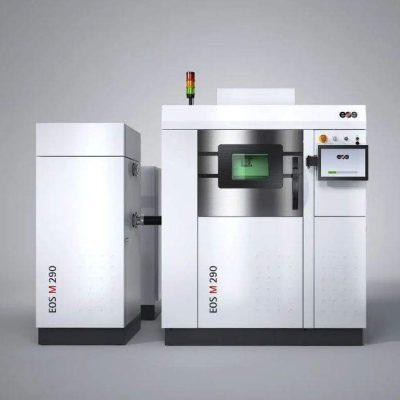
SLM Solutions SLM 500 HL (Premium Choice)
Offering a build volume of 500 x 280 x 365 mm, the SLM 500 HL is an ideal choice for those seeking speed and large printing size. With two models available, the Twin and the Quad, users can customize their printer based on the required build rate. The SLM 500 HL also features bidirectional recoating, which saves time and powder while maintaining high-quality prints.
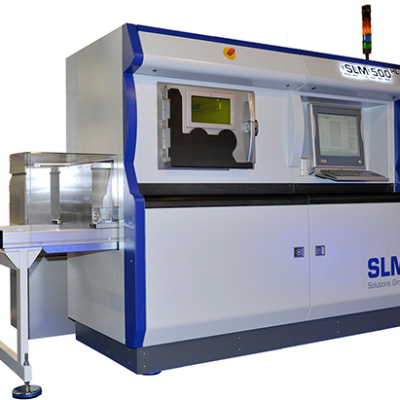
Xerox ElemX (Best Value)
The Xerox ElemX is an affordable, liquid metal 3D printer with a 300 x 300 x 300 mm build volume. It is a safer alternative to conventional metal powder-based 3D printing methods and uses aluminum wire coils as a more cost-effective material. The ElemX printer is capable of producing large parts in just four hours with minimal post-processing required.
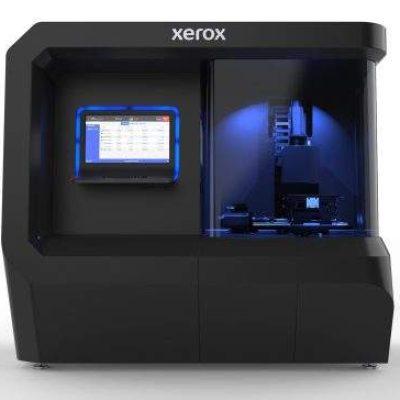
GE X Line 2000R (Best for Printing on a BIG Scale)
The GE X Line 2000R is a massive DMLM (Direct Metal Laser Melting) printer with an 800 x 400 x 500 mm build volume. Weighing 9,200 kg, it utilizes two 1-kilowatt lasers and features an automated transfer system for builds. Though it has a closed material system, it supports the high-strength AlSi10Mg alloy, making it suitable for aerospace, automotive, and mining applications.
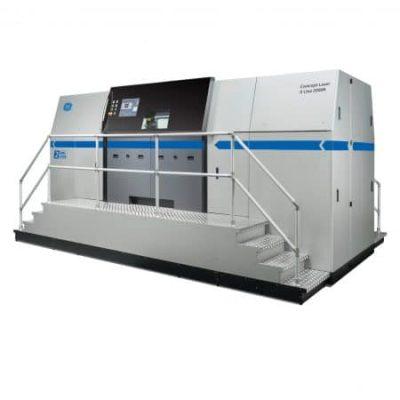
Spee3d WarpSPEE3D (Fastest Metal 3D Printer)
The Spee3d WarpSPEE3D is the fastest metal 3D printer available, using supersonic 3D deposition (SP3D) technology to accelerate air up to three times the speed of sound. With a 1000 x 700 mm build volume, it can produce parts weighing up to 40 kg. The WarpSPEE3D supports both copper and aluminum metal powders and is perfect for those who prioritize speed in their 3D printing process.
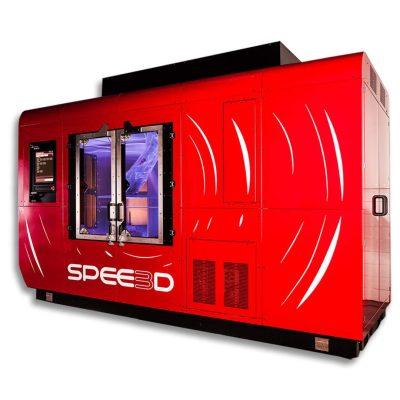
comparison table
| Model | Build Volume | Layer Resolution | Material System | Notable Features |
|---|---|---|---|---|
| EOS M 290 | 250 x 250 x 325 mm | 100 microns | Closed | – Wide range of supported materials – High-quality 400W laser – Limited build volume |
| SLM Solutions SLM 500 HL | 500 x 280 x 365 mm | 20 microns | Open | – Large build volume – Fast printing speed – Twin and Quad models – Bidirectional recoating |
| Xerox ElemX | 300 x 300 x 300 mm | 24 microns | Open | – Liquid metal 3D printer – Affordable alternative – Safer printing method – Minimal post-processing required |
| GE X Line 2000R | 800 x 400 x 500 mm | Not specified | Closed | – Liquid metal 3D printer – Affordable alternative – The safer printing method – Minimal post-processing required |
| Spee3d WarpSPEE3D | 1000 x 700 mm | Not specified | Open | – Fastest metal 3D printer – Supersonic 3D deposition (SP3D) technology – Large build volume – Supports copper and aluminum |
Pros and Cons
| Model | Pros | Cons |
|---|---|---|
| EOS M 290 | – Prints a variety of materials – 100-micron resolution | – Can only use EOS powders – Small build volume |
| SLM Solutions SLM 500 HL | – Perfect for aerospace or automotive industry applications – Bidirectional recoating – Fast build rate – Multiple options with different laser setups | – Expensive – Limited to printing medium-sized parts |
| Xerox ElemX | – Liquid metal printing technology is more affordable – Fast and large printing – Requires less post-processing | – Not as much community insight and information available |
| GE X Line 2000R | – One of the largest metal 3D printers available – Decently fast build rate – Automated transfer of builds from handling to processing stations | – Closed material system – Expensive |
| Spee3d WarpSPEE3D | – Superbly fast printing – Large build volume – Can print parts up to 40kg | – Expensive |
Maintenance and Troubleshooting
There are a few things to keep in mind when it comes to maintaining and troubleshooting your aluminum 3D printer. To start with, frequent maintenance is essential to ensuring that your printer keeps working correctly. This includes keeping the printer clean, inspecting the parts for damage, and making sure that all moving parts are adequately lubricated. Furthermore, it’s crucial to address any problems as soon as they appear to limit future harm. This can entail changing out worn-out or broken components, calibrating the printer, or changing settings to enhance print quality. To maintain optimum performance, it’s also critical to stay current with the newest firmware and software releases. You can prolong the useful life of your aluminum 3D printer by keeping up with maintenance and troubleshooting.
Tips for maintaining an aluminum 3D printer
Keep your printer clean
Regular cleaning of your aluminum 3D printer is important to keep it running smoothly. Dust and debris can accumulate over time, which can cause problems with the printer’s performance. Use compressed air to blow out any debris, and wipe down the printer with a clean, dry cloth.
Check for wear and tear
Inspect the printer’s components regularly to ensure that everything is in good condition. Replace any worn or damaged parts to avoid potential problems down the line.
Lubricate moving parts
Lubrication is important for the smooth operation of any mechanical system, and 3D printers are no exception. Apply a small amount of lubricant to moving parts, such as the printer’s rails and bearings, to keep them running smoothly.
Use high-quality materials
Using high-quality materials can help to extend the life of your aluminum 3D printer. Low-quality materials can cause clogs, which can damage the printer’s nozzle and other components. Choose materials that are specifically designed for 3D printing, and avoid using cheap or low-quality filament.
Keep the printer calibrated
Calibration is important to ensure that your 3D prints come out correctly. Follow the manufacturer’s instructions for calibrating your aluminum 3D printer, and re-calibrate it regularly to ensure accurate prints.
Keep the firmware up to date
Manufacturers release firmware updates for their printers to address issues and improve performance. Make sure to keep your printer’s firmware up to date to take advantage of these improvements.
Store the printer properly
When not in use, store your aluminum 3D printer in a dry, dust-free environment. Cover the printer with a dust cover to protect it from dust and debris.
Use the printer regularly
Regular use of your aluminum 3D printer can help to keep it in good condition. If the printer sits idle for long periods, it can develop issues with clogs or dried-out materials. Use the printer at least once a week to keep everything running smoothly.
Follow manufacturer recommendations
Always follow the manufacturer’s recommendations for maintaining your aluminum 3D printer. These recommendations can vary from printer to printer, so make sure to read the manual and follow any instructions provided.
Common issues and solutions
SLM:
One common issue with SLM printing is the presence of balling. Balling occurs when the laser energy used to melt the powder is too high, causing the material to become too hot and form into small balls. The solution to this issue is to decrease the laser energy and adjust the layer thickness. Another issue is warping, which is caused by thermal stress during printing. To solve this issue, you can adjust the build plate temperature and use a heated chamber.
LPBF:
LPBF printing can experience issues with porosity, which occurs when voids or air pockets are present in the printed material. This is caused by improper powder distribution or gas contamination. The solution is to ensure proper powder handling and minimize gas contamination. Another issue is cracking, which can occur due to high thermal stress during printing. This can be addressed by optimizing the printing parameters and using preheating techniques.
DMLS:
One common issue with DMLS printing is warping, which is caused by thermal stress. This can be addressed by adjusting the laser power and scan speed, as well as using a heated build chamber. Another issue is poor surface finish, which can be caused by laser beam reflection or poor powder distribution. This can be addressed by optimizing the scanning parameters and ensuring proper powder handling.
Binder Jetting:
One issue with binder jetting is poor dimensional accuracy, which can be caused by the shrinkage of the printed material during sintering. This can be addressed by adjusting the printing parameters and using post-processing techniques such as hot isostatic pressing. Another issue is delamination, which can occur when the layers do not fuse properly. This can be addressed by optimizing the binder distribution and curing process.
Future of Aluminum 3D Printing
The future of aluminum 3D printing looks incredibly promising. As technology advances, the capabilities of aluminum 3D printers will continue to improve. In the future, we can expect to see printers that are faster, more accurate, and able to print with an even wider range of materials. One major area of focus will likely be improving the size of build volumes, which will enable the creation of even larger objects. Additionally, we can expect to see aluminum 3D printing being used in a wider range of industries as the benefits of the technology become more widely recognized. With its ability to create complex shapes and geometries, aluminum 3D printing is poised to revolutionize the manufacturing process in the coming years.
Current Trends and Prospects
Increased adoption of aluminum 3D printing in the aerospace industry
The aerospace industry has been an early adopter of metal 3D printing technologies, particularly aluminum 3D printing. The use of 3D printing for aerospace components has allowed for the production of complex geometries, weight reduction, and improved performance. With the increasing demand for lightweight and high-performance components, it is expected that aluminum 3D printing will continue to see increased adoption in the aerospace industry.
Advancements in aluminum powder production
The quality of aluminum powder used in 3D printing has a significant impact on the final product. With advancements in aluminum powder production, 3D printing with aluminum has become more efficient, accurate, and cost-effective. The use of gas atomization, for example, allows for the production of high-quality aluminum powders with spherical particles and uniform distribution, which leads to better printing results.
Development of high-performance alloys for 3D printing
The development of high-performance aluminum alloys for 3D printing has opened up new possibilities for the use of aluminum 3D printing in various industries. The use of alloys such as AlSi10Mg and Al7075 has allowed for the production of parts with high strength and durability, making them suitable for applications in the aerospace, automotive, and medical industries. As research and development in this area continue, it is expected that new high-performance alloys will be developed for use in 3D printing.
Integration of automation and robotics in aluminum 3D printing
The integration of automation and robotics in aluminum 3D printing has allowed for the production of complex parts with high precision and efficiency. The use of automated systems for powder handling, part removal, and post-processing has reduced the need for manual labor, improved safety, and reduced production times. As the technology continues to develop, it is expected that the use of automation and robotics in aluminum 3D printing will become even more widespread.
Expansion of aluminum 3D printing services
The expansion of aluminum 3D printing services has made it easier for businesses to access this technology without investing in expensive equipment. Companies offering 3D printing services can provide businesses with access to a range of aluminum 3D printing technologies and expertise, making it easier for businesses to take advantage of this technology. As the demand for aluminum 3D printing services grows, it is expected that there will be an increase in the number of companies offering these services.
New developments in aluminum 3D printing
Multi-material printing
3D printers are being developed to enable the printing of multiple materials in a single print job. This means that aluminum can be combined with other materials, such as plastics and ceramics, to create more complex and functional parts.
Enhanced software capabilities
Improvements in 3D printing software are allowing for more sophisticated modeling and design, as well as better control over the printing process. This means that aluminum 3D printers can create more intricate and precise parts than ever before.
Large-scale printing
Advancements in printing technology are allowing for the creation of larger and more complex aluminum parts. This is opening up new possibilities for industries such as aerospace and automotive, where large, complex parts are needed.
Sustainable printing
Manufacturers are increasingly developing more sustainable and eco-friendly printing methods, such as using recycled aluminum powders and reducing waste in the printing process. This not only benefits the environment but also helps to reduce costs and improve efficiency.
Metal binder jetting technology
Metal binder jetting is a relatively new 3D printing technology that is gaining momentum in the aluminum 3D printing industry. The process involves printing a metal powder and then using a binder to bind the particles together. The binder jetting process is a more cost-effective and efficient way of producing aluminum parts. It also allows for the creation of complex geometries that are difficult to achieve with traditional manufacturing methods.
Use of AI and machine learning
The use of AI and machine learning in 3D printing is another new development that is transforming the aluminum 3D printing industry. These technologies are being used to optimize 3D printing processes and to develop new alloys for 3D printing. Machine learning algorithms are being used to analyze large amounts of data generated during 3D printing to identify trends and patterns. This information can then be used to improve the overall quality and efficiency of 3D printing.
Hybrid manufacturing
Hybrid manufacturing is a new development that combines 3D printing with traditional manufacturing methods. This approach allows for the creation of parts that are stronger, more durable, and more complex than those produced using traditional manufacturing methods alone. In hybrid manufacturing, 3D printing is used to create the complex geometries of a part, while traditional machining is used to finish and refine the part.
Green 3D printing
Green 3D printing is a new development that focuses on reducing the environmental impact of 3D printing. This is achieved by using environmentally friendly materials, reducing waste, and using renewable energy sources in the manufacturing process. For example, some companies are using recycled aluminum powder in their 3D printing processes to reduce waste and conserve resources. Others are using solar energy to power their 3D printers, reducing their carbon footprint.
Conclusion
In conclusion, 3D printing aluminum has enormous promise and is a rapidly expanding field. Aluminum 3D printers are becoming a popular option for numerous industries because of the rising demand for durable, lightweight, and affordable metal parts. New printing techniques, materials, and software have been developed as a result of technological breakthroughs, which have improved the process’ effectiveness and quality. To ensure optimal operation, aluminum 3D printers need to be properly maintained and troubleshooting, just like any other technology. In the future, we may anticipate even more creative uses and applications for aluminum 3D printing as the sector expands and new technologies are introduced.
Recap of the benefits of aluminum 3D printing
In conclusion, aluminum 3D printing has several advantages for a range of businesses. It offers designers and engineers a level of flexibility that traditional manufacturing cannot match by producing complicated geometries, lightweight structures, and high-strength parts. Additionally, it offers quicker manufacturing times and lowers waste and resource costs. It is a flexible alternative for a multitude of applications because it can print in metals including steel, and titanium. Furthermore, ongoing studies and developments in the area are producing even more sophisticated printing techniques and better material qualities. Aluminum 3D printing is positioned to play a bigger role in production as the need for lightweight and high-performance products keeps rising.
Encouragement for readers to explore aluminum 3D printing technology
Finally, 3D printing technology for aluminum has developed greatly in recent years, providing a variety of advantages and potential for many industries. It offers productive and economical production, flexible design options, and the capacity to develop intricate and lightweight structures. Because of this, there is a rising need for this technology in several sectors, including the aerospace, automotive, and medical industries. To benefit from its many advantages and keep ahead of the competition, readers are strongly advised to investigate this technology further and think about incorporating it into their business operations. The potential for innovation and expansion is enormous, and there are countless options thanks to the ongoing development and breakthroughs in aluminum 3D printing.
How to Get Started with Aluminum 3D Printing?
- Choose the Right Aluminum 3D Printer
Research and choose an aluminum 3D printer that meets your needs and budget.
- Prepare Your Design
Create or obtain a 3D design for your part, making sure it is compatible with your chosen 3D printer.
- Choose Your Material
Select the aluminum material you want to use, based on your desired properties and the capabilities of your 3D printer.
- Prepare Your Material
Load the aluminum material into your 3D printer and prepare it for printing, following the manufacturer’s instructions.
- Print Your Design
Print your 3D design using your aluminum 3D printer, ensuring that the printer is properly calibrated and the print settings are optimized.
- Post-Processing
Remove the printed part from the 3D printer and perform any necessary post-processing steps, such as sanding, polishing, or heat treatment.
- Quality Control
Inspect your finished part for any defects or issues, ensuring that it meets your desired specifications and requirements.
- Repeat and Refine
Iterate on your design and printing process as needed to improve the quality and efficiency of your aluminum 3D printing workflow.
FAQs
Most aluminum 3D printers can use AlSi10Mg, an alloy of aluminum, as well as other metals such as titanium, copper, and nickel.
No, aluminum 3D printers are specifically designed to print metal and cannot print other materials such as plastics or ceramics.
No, each aluminum 3D printer is designed to work with specific types of metal powders. It is important to use only the recommended powders for your printer to ensure high-quality prints and prevent damage to the machine.
Yes, aluminum 3D printing technology is generally more expensive than traditional manufacturing methods. However, the technology is becoming more accessible and affordable as it becomes more widely adopted.
Yes, aluminum 3D printing technology can be used for mass production, but it may not be the most cost-effective option for large-scale production runs. It is best suited for small to medium-scale production runs or for creating prototypes and custom parts.

